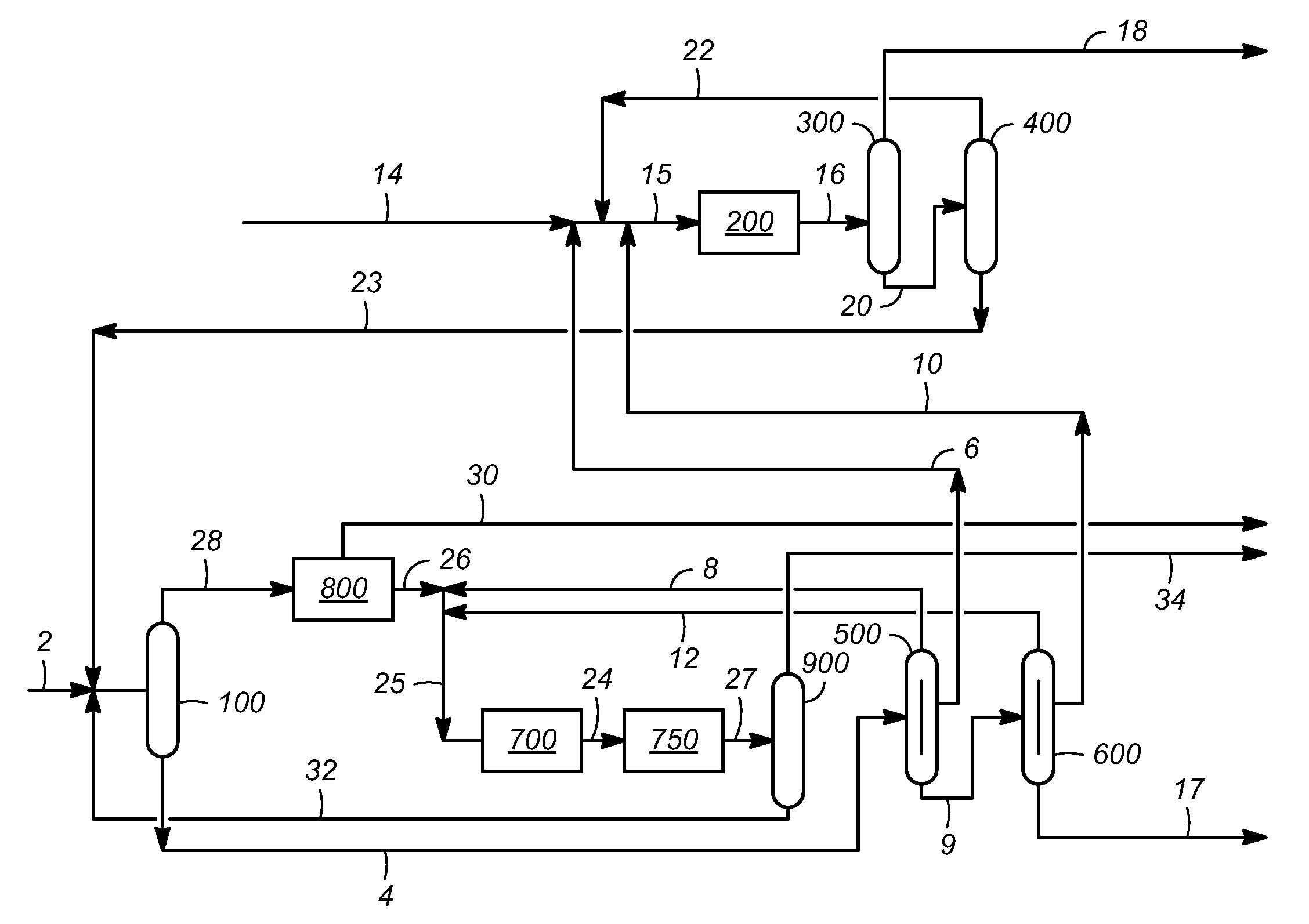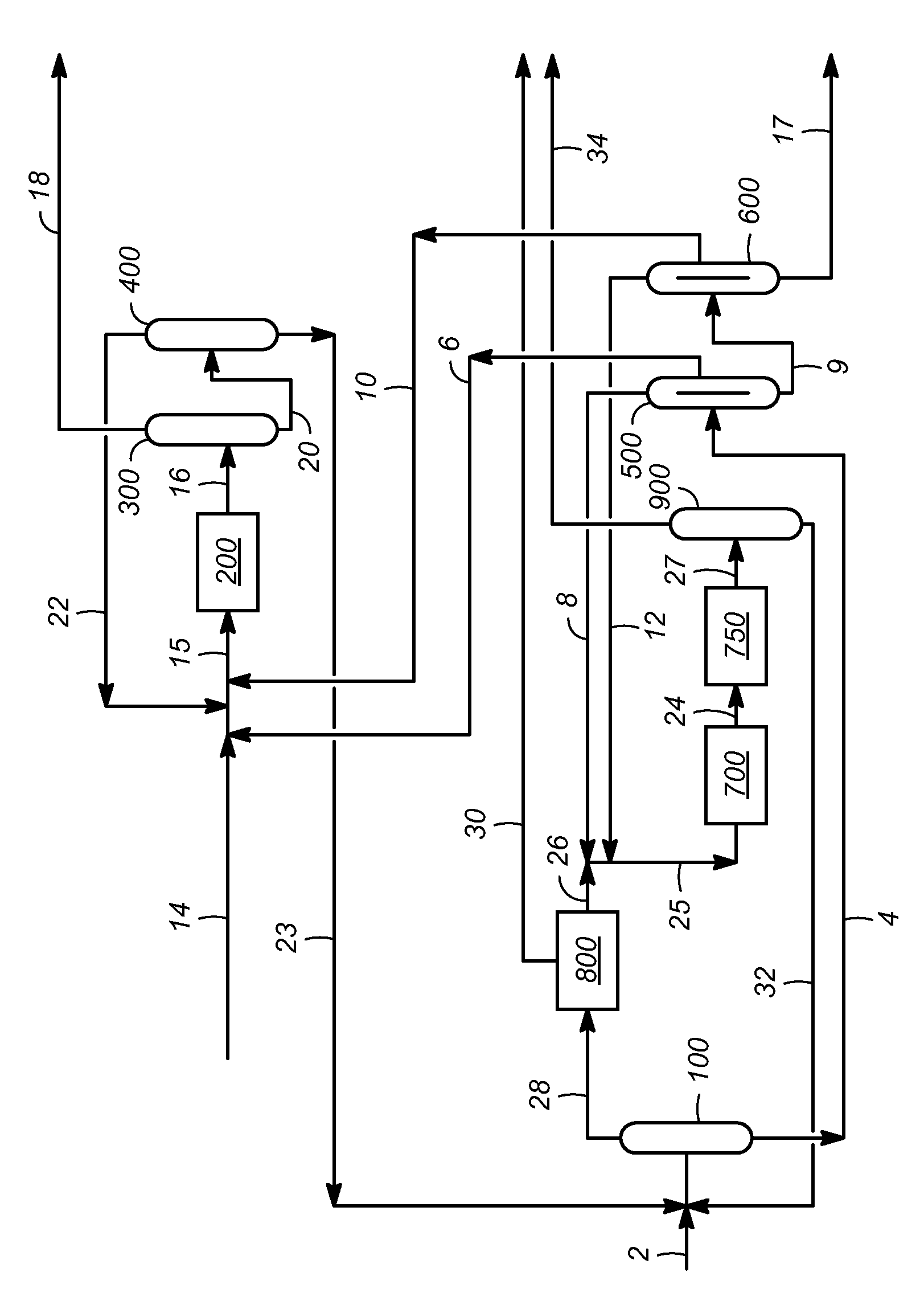Transalkylation of methylated aromatic hydrocarbon-enriched fractions in c8 aromatic hydrocarbon production
a technology of aromatic hydrocarbons and methylated aromatic hydrocarbons, which is applied in the direction of organic chemistry, fuels, and thickeners, can solve the problems of limiting the production of desired csubs, affecting the yield of lower value byproducts such as light alkane hydrocarbons, ethane, propane, and butanes, and achieves less value, improves performance in this zone, and increases yield
- Summary
- Abstract
- Description
- Claims
- Application Information
AI Technical Summary
Benefits of technology
Problems solved by technology
Method used
Image
Examples
Embodiment Construction
[0018]The feed stream, according to aspects of the invention, is any aromatic hydrocarbon containing stream, and preferably comprises C9 or C10 aromatic hydrocarbons. Representative feed streams include fractions of reformate (i.e., catalytic reforming effluent). Such fractions may be obtained, for example, from the catalytic reforming of naphtha, followed by separation of the reforming effluent using a reformate splitter, and further separation of a first high boiling (e.g., bottoms) product exiting the reformate splitter using a xylene column to recover a second high boiling (e.g., bottoms) product exiting the xylene column. In this case, the first high boiling product often contains predominantly (e.g., greater than 50%, and often greater than about 80%, by weight) C8 and higher carbon number aromatic hydrocarbons, and the second high boiling product, which may be used as a feed stream in representative embodiments of the invention, often contains predominantly (e.g., greater tha...
PUM
| Property | Measurement | Unit |
|---|---|---|
| temperature | aaaaa | aaaaa |
| absolute pressure | aaaaa | aaaaa |
| absolute pressure | aaaaa | aaaaa |
Abstract
Description
Claims
Application Information
 Login to View More
Login to View More - R&D
- Intellectual Property
- Life Sciences
- Materials
- Tech Scout
- Unparalleled Data Quality
- Higher Quality Content
- 60% Fewer Hallucinations
Browse by: Latest US Patents, China's latest patents, Technical Efficacy Thesaurus, Application Domain, Technology Topic, Popular Technical Reports.
© 2025 PatSnap. All rights reserved.Legal|Privacy policy|Modern Slavery Act Transparency Statement|Sitemap|About US| Contact US: help@patsnap.com



